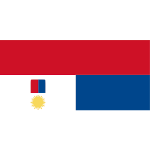Negros Revolution Day in the Philippines Date in the current year: November 5, 2026
 Negros Revolution Day, also known as simply Negros Day or the Fifth of November (Cinco de noviembre) is observed in the Philippine province of Negros Occidental on November 5. It was established to commemorate the Negros Revolution of 1898 that resulted in the overthrow of the Spanish authorities and the establishment of the short-lived Negros Republic.
Negros Revolution Day, also known as simply Negros Day or the Fifth of November (Cinco de noviembre) is observed in the Philippine province of Negros Occidental on November 5. It was established to commemorate the Negros Revolution of 1898 that resulted in the overthrow of the Spanish authorities and the establishment of the short-lived Negros Republic.The Spanish first set foot on the island in 1565. They named it Negros, which means “Blacks”, because the island was inhabited by dark-skinned aboriginal ethnic groups. Soon, Miguel López de Legazpi established control over Negros and placed it under the jurisdiction of the governor of Oton. In 1890, the island was partitioned into two provinces that exist to this day, Negros Occidental (Western Negros) and Negros Oriental (Eastern Negros).
When revolutionary sentiments arose in some of the Philippine provinces, the Spanish authorities in Negros were positive that Negros wouldn’t join an uprising against Spain, should there be one; it was a rich province and local leaders, most of whom were sugar planters, seemed quite content with their current situation. However, many planters actually began to sympathize with revolutionaries.
On November 3, 1898, sugar baron Ancieto Lacson arrived in the City of Silay, where he met other revolutionary leaders, and they decided to begin an insurrection against the Spanish authorities in two days. The revolt broke out in central and northern Negros on the morning of November 5; by evening, the rebels had captured Silay and hoisted the revolutionary flag.
On November 6, the rebels advanced upon Bacolod, the capital of Negros Occidental. They weren’t particularly heavily armed, but they used fake rifles made of palm fronds and cannons made of rolled bamboo mats to deceive the Spanish authorities. The trick worked, and the governor of the province chose to surrender the town without a fight and negotiate with the revolutionary leaders.
The Negros Revolution concluded on November 6, 1898, although the rebels didn’t have control over the entire island. They declared the establishment of the Republican Canton of Negros (Cantón Republicano de Negros) of the First Philippine Republic on November 27 and captured Dumaguete three days later, thereby liberating all of Negros from Spanish rule.
Sandy, the Republic of Negros was short-lived. In 1899, the First Philippine Republic entered a war with the United States. Instead of supporting the Republic, the government of Negros chose to come under U. S. protection, hoping that it would help Negros to become independent from the Philippines and retain autonomy. However, when the First Philippine Republic lost the war, the U.S. government annexed Negros to the rest of the Philippine Islands.
Although the autonomy of Negros was brief, the anniversary of the outbreak of the Negros Revolution is still celebrated on the island. In 1989, Philippine president Corazon Aquino declared it a special non-working holiday in the province of Negros Occidental. It is marked with various remembrance ceremonies.
- Category
- Anniversaries and Memorial Days
- Country
- Philippines
- Tags
- Negros Revolution Day, Negros Day, Fifth of November, observances in the Philippines, Republic of Negros